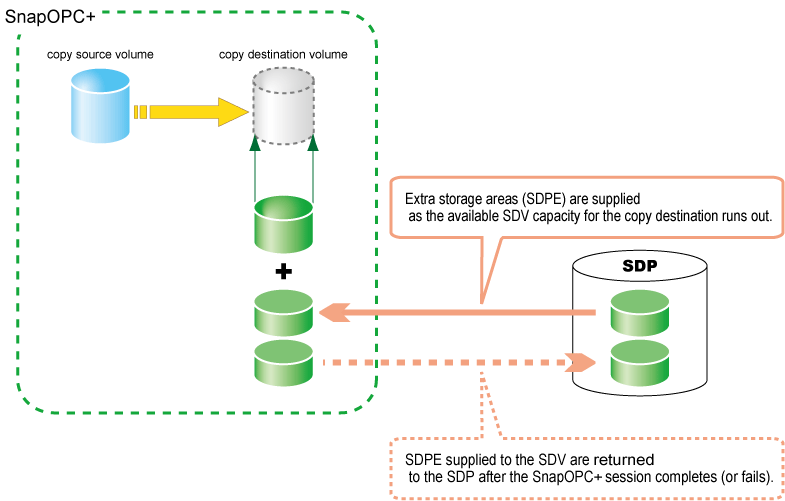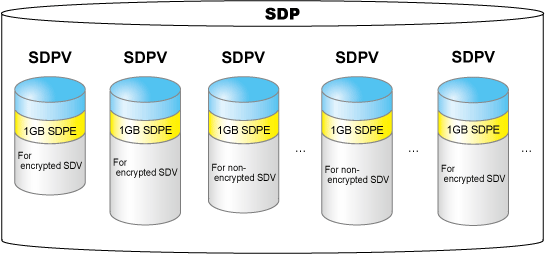Creating copy destination volumes
When creating copy destination volumes for snapshot, note the following:
The type of a copy destination volume must be SDV. OPEN or SDPV can not be used as a copy destination for snapshot.
The size of a copy destination volume must be the same as that of copy source volume (the original volume).
When creating an SDV, set the appropriate capacity.
Creating Snap Data Pool (SDP)
Snap Data Pool (SDP) is used for SnapOPC+.
By registering standby storage areas in the SDP, it is possible to supply extra storage areas (SDPE: Snap Data Pool Elements) from the SDP whenever the amount of updates exceeds the capacity of the copy destination SDV, allowing the copy session to continue without failing.
If storage area capacity runs short in an SDV, extra storage area (SDPE) is automatically supplied from the SDP.
Once the copy session is completed, all extra storage area (SDPE) supplied to the SDV is returned to the SDP. (The SDPE is also returned to the SDP if the copy session fails.)
Figure A.3 SDP concept

When creating copy destination volumes for snapshot, note the following:
One SDP can be created per ETERNUS Disk storage system.
SDP becomes available upon creating a dedicated SDPV. After creation, the SDPV is automatically allocated to the SDP.
If the SDV is encrypted, make sure the SDPV is also encrypted.
If the ETERNUS Disk storage system contains both encrypted and non-encrypted SDVs, then both encrypted and non-encrypted SDPVs will be needed.
Estimate the update amounts expected for each copy source volume, then decide the SDV and SDP capacities. If estimation is difficult, try setting up the SDV and SDP with a total capacity of 50% of that of the copy source (note that this is just a rule-of-thumb value and that different operating configurations will require different SDP capacities).
Figure A.4 Construction of SDP
